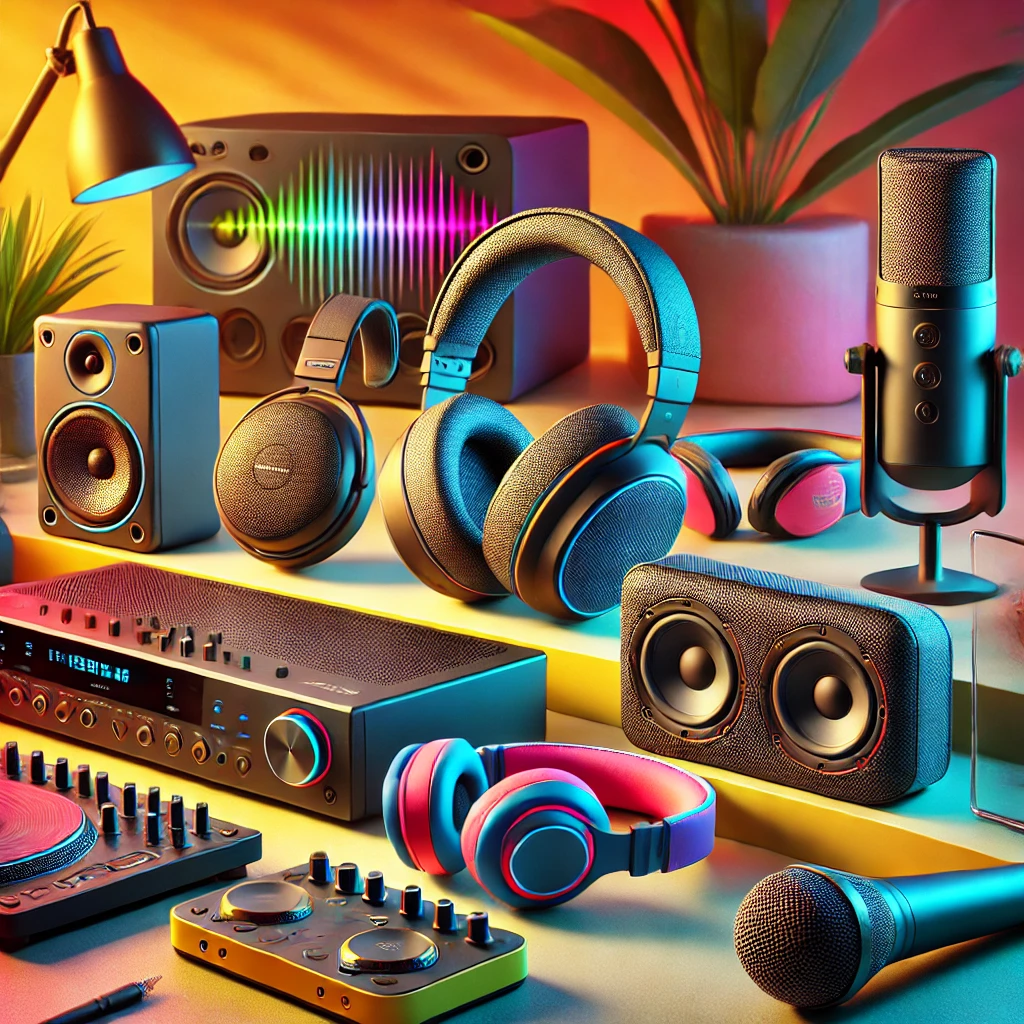Audio and Music Electronics Buying Guide
Welcome to your ultimate guide to buying audio and music electronics. Whether you’re a casual listener or an audiophile, selecting the right equipment can transform your audio experience. This comprehensive guide will help you make informed decisions and ensure you get the best value for your money.
What Are Audio and Music Electronics?
Audio and music electronics encompass devices designed to record, process, or play audio. These include:
Headphones and Earphones: For personal listening.
Speakers: For immersive, room-filling sound.
Turntables and Record Players: For vinyl enthusiasts.
Soundbars and Home Theater Systems: For an enhanced TV and movie experience.
Microphones: For recording or podcasting.
Audio Interfaces: For music production.
Portable Audio Players: For music on the go.
Amplifiers and Receivers: To power and optimize sound systems.

Key Factors to Consider When Buying Audio Electronics
Audio Quality
Look for devices with high-fidelity sound reproduction.
Check frequency response, Total Harmonic Distortion (THD), and Signal-to-Noise Ratio (SNR).
Purpose and Use Case
Casual listening: Portable speakers or wireless headphones.
Professional use: Studio monitors or condenser microphones.
Gaming: Surround sound headphones or speakers.
Connectivity Options
Wired vs. wireless (Bluetooth, Wi-Fi, or NFC).
Support for modern codecs like AAC, aptX, or LDAC for high-quality wireless audio.
Compatibility
Ensure the device is compatible with your existing setup (e.g., smartphones, home systems, or computers).
Budget
Entry-level: Affordable options for casual users.
Mid-range: Balanced price-to-performance ratio.
High-end: Premium devices for audiophiles and professionals.
Brand and Warranty
Opt for reputable brands like Bose, Sony, Sennheiser, JBL, or Yamaha.
Check warranty periods and after-sales support.
Categories of Audio and Music Electronics
Headphones and Earphones
Over-Ear: Best for immersive sound and noise isolation. Order Now 👉
On-Ear: Compact design, good for casual use. Order Now 👉
In-Ear (Earbuds): Lightweight and portable. Order Now 👉
True Wireless: Completely cable-free convenience. Order Now 👉
Speakers
Bookshelf Speakers: Compact and versatile. Order Now 👉
Floor-Standing Speakers: Powerful sound for large rooms. Order Now 👉
Portable Bluetooth Speakers: For music on the go. Order Now 👉
Smart Speakers: Voice-controlled with integrated virtual assistants. Order Now 👉
Turntables and Record Players
Consider features like belt drive vs. direct drive, built-in preamp, and USB connectivity for digitizing vinyl.
Soundbars and Home Theater Systems
Look for multi-channel setups (e.g., 5.1 or 7.1) for surround sound.
Features like Dolby Atmos or DTS:X enhance cinematic audio.
Microphones
Dynamic Microphones: Rugged and versatile. Order Now 👉
Condenser Microphones: Ideal for studio recording. Order Now 👉
USB Microphones: Easy to connect and use. Order Now 👉
Portable Audio Players
High-Resolution Audio Players: Support for FLAC, ALAC, or DSD files.
Consider storage capacity and battery life.
Amplifiers and Receivers
Choose based on power output (watts per channel) and compatibility with your speakers.
Look for additional features like streaming support and multiple input options.
Tips for Choosing the Right Audio Equipment
Research and Reviews: Check expert reviews and user feedback.
Test Before You Buy: If possible, test devices in-store to evaluate sound quality and comfort.
Prioritize Features: Identify which features are non-negotiable for your needs.
Future-Proofing: Invest in devices with support for emerging technologies.
Top Brands in Audio and Music Electronics
Sony: Known for innovation and quality.
Bose: Famous for noise-canceling technology.
Sennheiser: A favorite among audiophiles.
Yamaha: Reliable for home audio systems.
JBL: Excellent portable speakers and sound systems.
Maintaining Your Audio Equipment
Regular Cleaning: Prevent dust and dirt buildup.
Proper Storage: Avoid exposing devices to extreme temperatures or humidity.
Firmware Updates: Keep your devices updated for optimal performance.
Cables and Connections: Use high-quality cables to avoid signal degradation.
Conclusion
Investing in the right audio and music electronics can significantly enhance your listening experience. Whether you’re building a home theater, producing music, or just enjoying your favorite tunes, this guide will help you navigate the options and make the best choice. For more tips and detailed reviews, explore our other buying guides.
Disclaimer
Our buying guides are designed to help you make informed decisions by providing well-researched insights, product details, and expert recommendations. However, features, prices, and availability may change over time. We encourage you to verify information directly with manufacturers or sellers before purchasing. Your final choice should be based on personal research and preferences, and we are not responsible for any decisions made based on this guide.